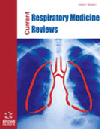
Full text loading...
Tuberculosis (TB) was one of the most challenging diseases in terms of diagnosis, treatment, and control during the COVID-19 pandemic. The present study was conducted to investigate the impact of the COVID-19 pandemic on the incidence of tuberculosis.
This study was cross-sectional, based on a census of all patients with tuberculosis whose information was available in the tuberculosis registration system of the Health Vice-Chancellor of Jiroft University of Medical Sciences from 2016 to 2021. In this study, demographic information and variables related to the type of tuberculosis, disease case, treatment result, and treatment regimen were collected using a researcher-made questionnaire.
The incidence of tuberculosis during the COVID-19 pandemic was significantly reduced by 57% compared to the pre-pandemic period. There was no significant difference between the pre-COVID-19 era and the pandemic era in terms of demographic variables and several determining factors in TB patients.
The COVID-19 pandemic was found to impact the control of the tuberculosis program. Delays in referral, diagnosis, and treatment led to an increase in the spread of tuberculosis, particularly within households, an increase in the number of deaths, and an increase in drug resistance of the tuberculosis microbe. Therefore, it is recommended that awareness programs for the public about tuberculosis be organized and that more education be provided to health and treatment staff about tuberculosis to ensure that the control measures implemented in recent decades are not wasted.

Article metrics loading...

Full text loading...
References


Data & Media loading...

